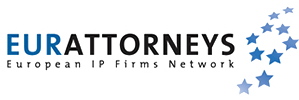The registration of An Italian trade mark confers exclusive rights in Italy, in the State of San Marino and the Vatican State, due to agreements between Italy and these two neighboring States. The competent office is the Italian Patent and Trademark Office, Department of the Ministry of Economic Development.
Registration procedure
The registration procedure of a trademark is divided into two phases. In the first phase there is an exam carried out by the Italian Patent and Trademark Office which checks the correctness of the formal requirements of the application (e.g.: the name of the applicant, the list of goods and services, the representation of the trademark, the payment of taxes etc.) and verifies that the mark has distinctive character, it is not contrary to law, public order, that it does not offend morality and is not likely to mislead the public. The Italian Office does not perform any check on the existence of earlier rights that may invalidate the mark. Subsequently, the trademark application is published in the Official Gazette and, from the date of publication, the holders of earlier rights have at their disposal a period of three months to oppose the registration of the trade mark application. Should no opposition be filed, the trademark comes to registration.
Timing for obtaining the registration
In the absence of official objections or oppositions filed by third parties, an Italian trademark application normally comes to registration after about – 6-8 months from the filing date.
Benefits
The benefits relating to the registration of a trade mark are multiple and of crucial importance. As an example, we can point out the following:
- exclusive right to use the trademark, along with the resulting right to prevent unauthorized third parties from using identical or confusingly similar signs for goods or services identical or similar to those claimed in the application for registration;
- increasing of the commercial value of the trademark, which thus becomes a capital asset for the Company;
- right to conclude licensing agreements relating to the use of the trademark for all or some of the goods or services for which it has been registered;
- the right to display the ® symbol next to the trademark , whose function is precisely to inform the consuming public and any competitors that the mark has been registered, thereby deterring any wrongful use.
Moreover, in case of conflicts, those who have registered their trademarks, in order to enforce their rights, will simply be required to show the registration certificate. In contrast, for those who use a trademark without registration, enforcing their rights may result to be much more burdensome (and costly).
